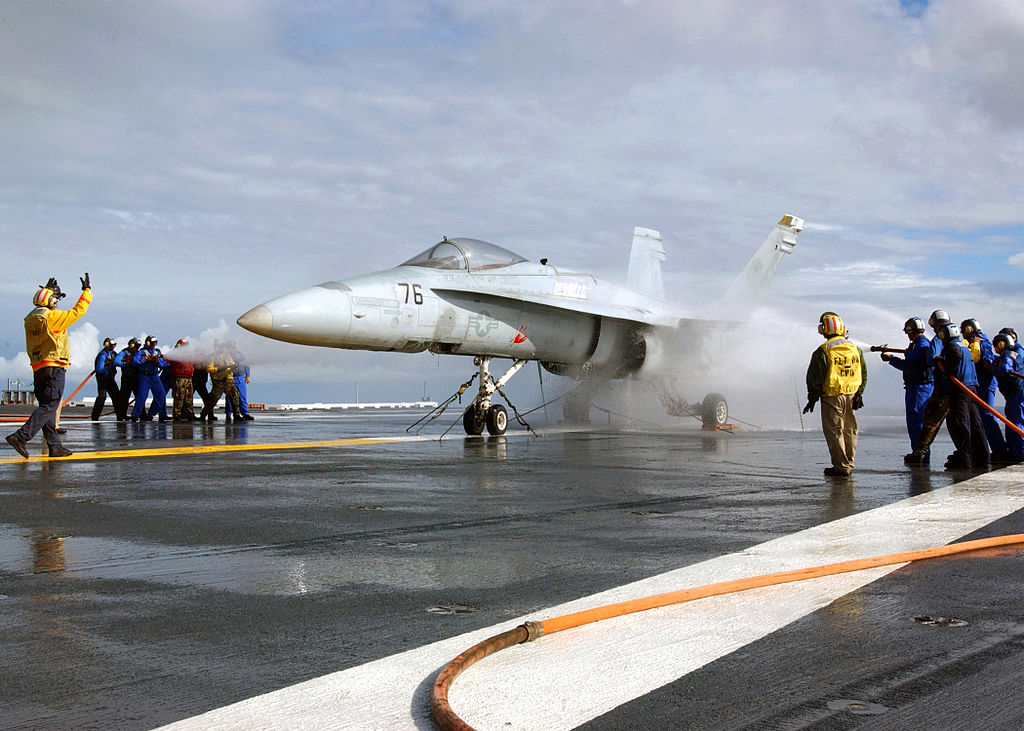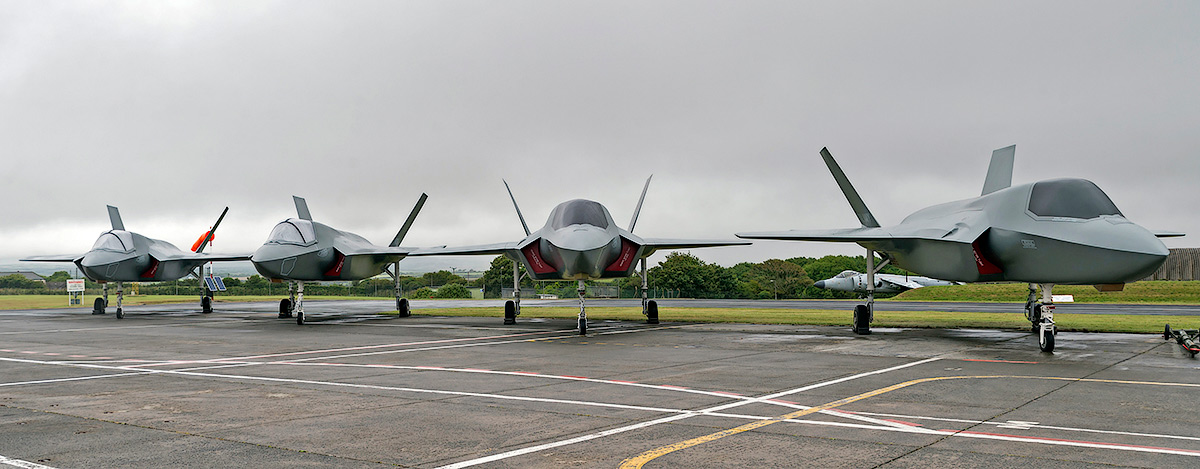Spotted in the background of a photo taken aboard the Indian Navy’s new INS Vikrant aircraft carrier, three wheels positioned similarly to that of many fighter jets’ wheelbases can be seen attached to something barely reminiscent of an airframe. At first glance, it almost looks as though a cloak of invisibility has been tossed over a mysterious new aircraft or that Wonder Woman landed on the carrier, but upon closer inspection, it can be deduced that the wireframe is a very minimalistic example of a carrier deck crew aircraft handling training aid.
Indian defense journalist Angad Singh, or @zone5aviaition on Twitter, shared the snapshot of the deck belonging to the Indian Navy’s new home-built INS Vikrant with the gangly contraption in the background. Upon closer examination, it became clear that the wireframe was meant to represent the dimensions and wheelbase of a Mikoyan MiG-29K — India’s current carrier-based multi-role fighter.
“[That] is a wireframe mock-up for deck handling, lift clearance, parking/lashing et al,” Singh told The War Zone. “[The Indian Navy] had something similar on deck when Vikramaditya was being refurbished. Made sense that the navy would trot it out again for the next boat. But yeah, not very commonly known.”
To be clear, as Singh noted in his response, the “similar” maquette that was used aboard the INS Vikramaditya as the Kiev-class carrier was being modified to better suit the Indian Navy was actually a helicopter mock-up. Although, it was created to address the same principle and could imply that such wireframes are a staple of training procedures for Indian Navy’s carrier deck crews.

While it is unclear what exactly this incredibly basic deck-handling aid is made out of, it certainly weighs in on the lighter side as it would appear that the MiG-29K replica is meant to primarily provide the dimensions of the jet and the wheelbase. This way, carrier deck crews can use the airy wireframe in training exercises that would require movement all across the surface of the deck, in and out of the launch and recovery areas, the elevators, and inside the carrier’s hangar bay.
Although the appearance of the wireframe in the background of the image shared on social media may be one of the first snapshots of it to begin circulating the internet, it certainly isn’t the first time that a mock-up of a fighter jet has been used for carrier operations training purposes. The big difference is that those usually have a lot more substance and represent their aircraft in solid form. In fact, the U.S. Navy uses real retired airframes for ground handling instruction, firefighting drills, crash recovery exercises, and other training aboard its carriers. There is usually always at least one derelict airframe present on America’s flattops, which can confuse onlookers who think it’s a flyable aircraft even though the ship’s air wing isn’t embarked.

Even full-on prototypes have been hauled aboard Navy carriers for fit checks — without flying — as can be seen in the video below of the MQ-25 in action.

Another example included four life-size replicas of F-35 Lightning II jets that were used on land at Royal Naval Air Station Culdrose by the HMS Queen Elizabeth’s future deck crew. The life-size mockups were used by the crewmembers to learn how to efficiently move the aircraft around on the ship, just as the MiG-29K wireframe is intended to, while the Royal Navy awaited the rest of their U.S.-supplied F-35B Joint Strike fighters.
“While they have no engines, sensors, or weapons, the four replica F-35s – dubbed the ‘faux fighters’ by the team at Culdrose – will allow handlers to get used to the size and weight of the real thing – without the danger of damaging a multi-million-pound stealth fighter – ahead of moving them around for real from autumn 2018,” read an announcement published by the Royal Navy in 2017.

Made of mostly fiberglass, the faux fighters provided trainees with the opportunity to fill their ‘fuel’ tanks with water, and the two replicas fitted with opening cockpits allowed crewmembers to practice safety procedures like removing an injured pilot from the cockpit. The ‘mini air force,’ as the Royal Navy dubbed it, provided their naval force with the chance to train realistically while awaiting their new F-35 fleet and managed quite a bit of the risk that comes along with carrying out exercises using actual multi-million dollar jets in the process.
China has also largely embraced this concept. In fact, they have a full-on carrier mockup on land including aircraft for its deck. Most recently, photographs surfaced in 2021 that showed what appeared to be a mock-up of the country’s Shenyang FC-31 stealth fighter stationed at the Chinese Navy’s land-based carrier test facility. While the replica was intended to serve the same training purposes as the Royal Navy’s and the Indian Navy’s dummy jets, this particular development concurrently added further evidence that China was in the process of adapting its stealthy light-to-medium weight land-based fighter jet for carrier operations. That assumption was later confirmed in flying form.
China and India have both been busy developing their own domestically built aircraft carriers, with India’s INS Vikrant that the MiG-29K wireframe was pictured aboard having first started sea trials in 2021. Despite a number of COVID-related delays and issues with remaining under budget, INS Vikrant seems to now be back on track for fielding, having just completed its fourth phase of sea trials this past weekend. Including the MiG-29K, the vessel will reportedly be able to operate up to 30 fighters and helicopters including Kamov-31 helicopters and MH-60R multi-role helicopters. Although, the ship’s aircraft fleet could later feature western types currently competing for a contract with the Indian Navy, including the French Rafale M and the F/A-18E/F Super Hornet.
Perhaps we will see more of these wacky wireframe aircraft as INS Vikrant nears commissioning, although time is running out with her final delivery now slated for the end of this month.
Contact the author: Emma@thewarzone.com
